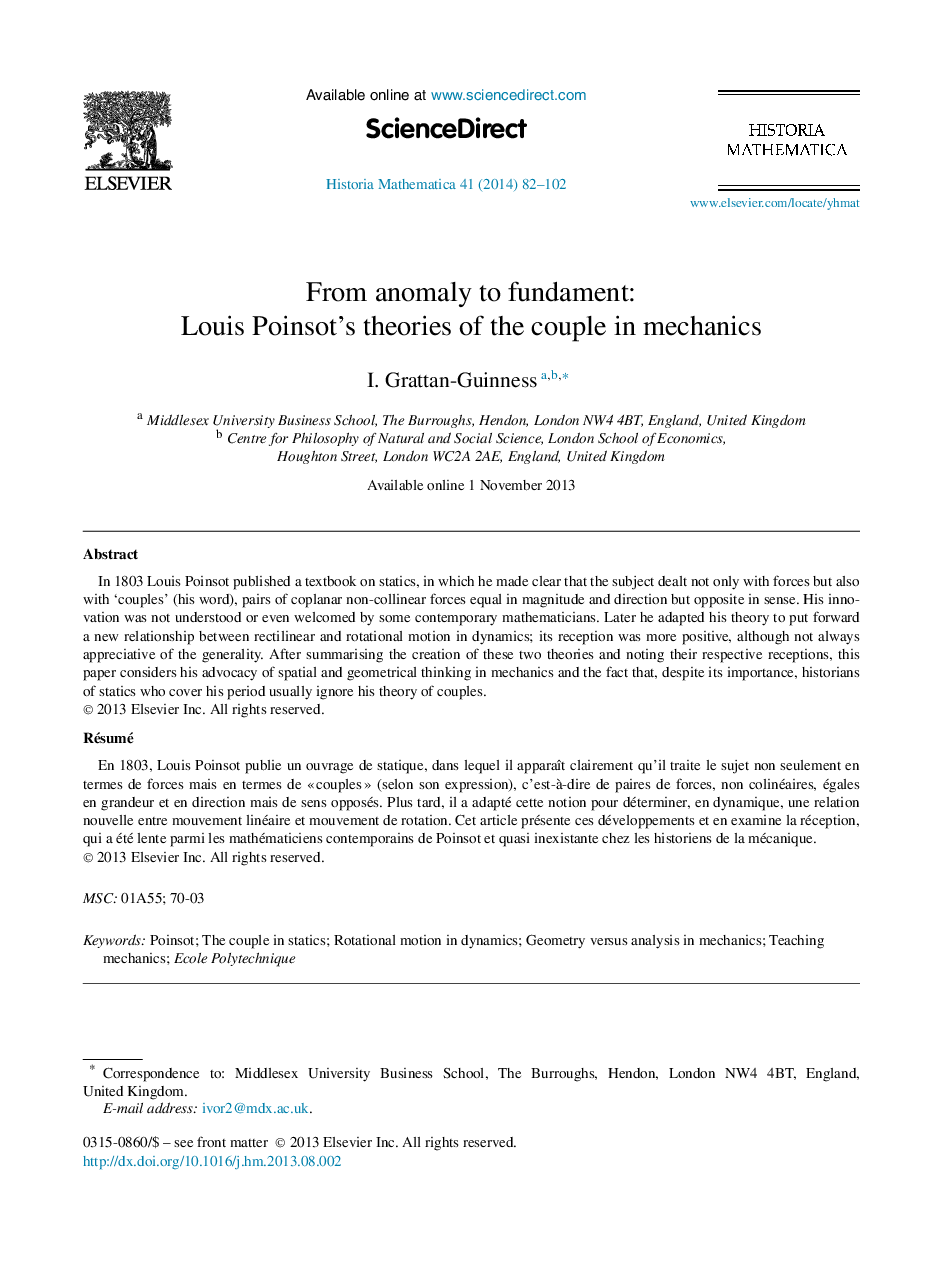| Article ID | Journal | Published Year | Pages | File Type |
|---|---|---|---|---|
| 1158463 | Historia Mathematica | 2014 | 21 Pages |
In 1803 Louis Poinsot published a textbook on statics, in which he made clear that the subject dealt not only with forces but also with ‘couples’ (his word), pairs of coplanar non-collinear forces equal in magnitude and direction but opposite in sense. His innovation was not understood or even welcomed by some contemporary mathematicians. Later he adapted his theory to put forward a new relationship between rectilinear and rotational motion in dynamics; its reception was more positive, although not always appreciative of the generality. After summarising the creation of these two theories and noting their respective receptions, this paper considers his advocacy of spatial and geometrical thinking in mechanics and the fact that, despite its importance, historians of statics who cover his period usually ignore his theory of couples.
RésuméEn 1803, Louis Poinsot publie un ouvrage de statique, dans lequel il apparaît clairement qu'il traite le sujet non seulement en termes de forces mais en termes de « couples » (selon son expression), c'est-à-dire de paires de forces, non colinéaires, égales en grandeur et en direction mais de sens opposés. Plus tard, il a adapté cette notion pour déterminer, en dynamique, une relation nouvelle entre mouvement linéaire et mouvement de rotation. Cet article présente ces développements et en examine la réception, qui a été lente parmi les mathématiciens contemporains de Poinsot et quasi inexistante chez les historiens de la mécanique.
